Gollum Jade - Crassula Ovata 'Gollum': Care & Growing Guide - Planet Desert
Updated: June 05, 2024

The gollum jade, also known as Crassula Ovata Gollum, is a stunning houseplant and belongs to the jade plant family. It is an evergreen perennial succulent that belongs to the Crassulaaceae family and is a variety of the Crassula ovata.
Inspired by movies like Shrek and The Lord of the Rings, the Gollum jade plant have been fondly nicknamed after these movies, often referred to after Gollum 535. It is closely related to the hobbit jade plant, and both succulents get their names from the writings of JRR Tolkien. It is also referred to as Shrek ears plants, ET fingers, money tree, trumpet jade, gollum jade, and finger succulents.
Crassula ovata Gollum jade is also considered a symbol of good luck in Chinese culture; that's why sometimes it is also referred to as the money plant.
About Gollum Jade
Gollum jade succulent plants are rare plants native to South Africa's tropical regions and southeastern African countries such as Mozambique. These Gollum jade plants have characteristic tubular green leaves, elongated with red tinges towards the tips that curl inward. It is also known for its unusual, fleshy, or succulent foliage that is long and slightly flared in shape (similar to an ogre's ears). With trumpet-like opening the Gollum jade plants puckered ends are akin to suction cups.
The gollum plant has a slow growth rate; can grow up to 3 feet tall and 2 feet wide, but most home gardeners keep them as small, bonsai-like indoor trees. However, at times, expect a huge jade plant above the height of 4 feet, provided it gets all the right conditions.

In this comprehensive guide from Planet Desert, we'll cover everything you need to know about Gollum jade plant - from its sun exposure needs to how to propagate it by cuttings and more. So hop on over and let's get started!
Gollum Jade Care
Crassula 'Gollum' jade is a low-maintenance jade plant that thrives with the right conditions and careful watering.
Quick Reference
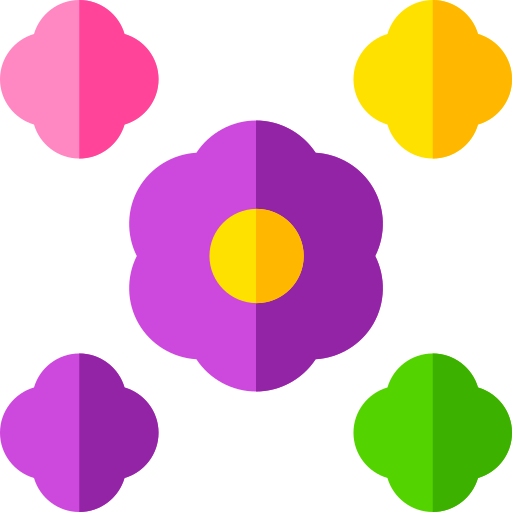
Bloom Season

Flower Color

Growth Rate

Hardiness Zone
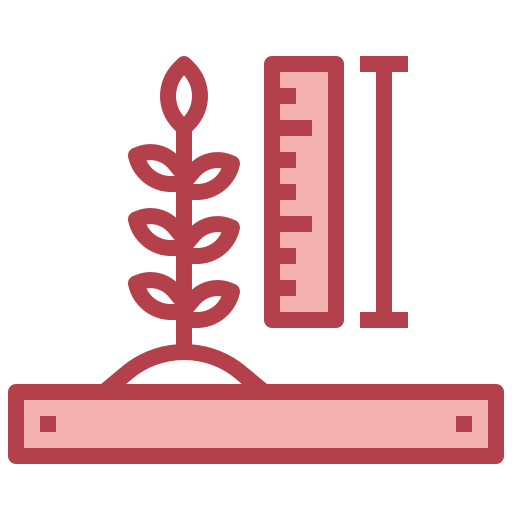
Mature Size
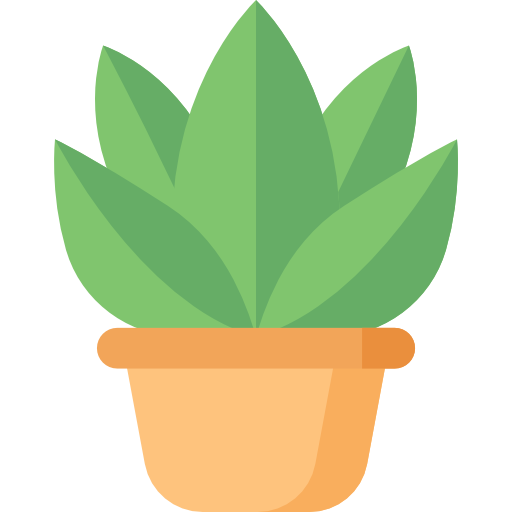
Plant Type

Sun Exposure

Toxicity

Watering Needs
Gollum Jade Plant Watering Needs
Like other succulents, the Crassula Ovata Gollum Jade is very easy to care for. It is drought-tolerant and only needs to be watered when the soil is completely dry. Overwatering can be harmful to your Gollum jade, so it is important to let the soil dry out between waterings.
In the spring and summer, during the growing season, it may need to be watered more frequently. But in the fall and winter months, during the dormant season, it may only need to be watered once a month.
When watering Gollum Jade, it is important to water it thoroughly. This means that you should water it until the water runs out of the drainage holes in the bottom of the pot. After watering, make sure to empty any excess water from the saucer underneath the pot. This will prevent the roots from sitting in water, which can cause root rot. It is also important to use a pot with drainage holes to ensure that the soil doesn't become waterlogged.
Remember, water is beneficial to your jade tree succulent, but avoid overwatering. Ensure that you water the your Gollum jade plant well, but the topsoil must be dry between two watering sessions.
Ideal Lighting Needs For Gollum Jade
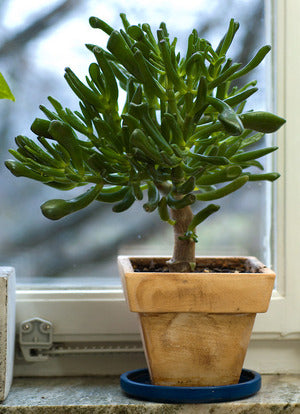
When growing indoors, it is best to place the Gollum jade in a bright location, such as near a south-facing window that receives indirect sunlight.
You can also use artificial light to supplement the Crassula ovata Gollum jade light requirements.If you notice that your jade plant is not getting enough light, you can move it to a brighter location or provide grow light.
If your Gollum jade succulent is not getting enough bright sunlight, it may become leggy, and the leaves may lose their vibrant green color.
If it is getting too much light, the leaves may turn yellow or brown and your Crassula Gollum plant may become stressed.
When grown outdoors, the Gollum jade prefers bright full sun for at least 4-6 hours daily. It will not develop an appealing reddish tinge at the tips of its leaves if not exposed to full sunlight. Remember, it can tolerate direct sunlight, but too much can burn the leaves.
Sometimes, you may wonder the reason behind a red jade plant. It means that your Gollum jade is getting way more sunlight than is required.
The crassula jade plant loves bright natural light. But ensure it is not directly falling on your Gollum jade plant. Prefer to keep the Gollum jade plant under partial shade as the full shade can make the tubular succulent less vibrant.
Gollum Jade Optimal Soil & Fertilizer
The Gollum jade likes very airy, porous, nutrient-rich soil with a pH of 5.6 - 6.5. Succulents require fast-draining soil that dries completely between waterings. Your soil must have a sandy texture and a low water-holding capacity, just like desert soil. Soggy wet soil can damage your jade succulent and contributes to bacterial and fungal rot. In addition, because of a lack of oxygen, soggy soil substitutes air pockets with water, resulting in an anaerobic environment that can kill your jade plant.
As an alternative, you can create your own potting mix by combining equal portions of perlite, coarse sand, and good natural potting soil. Ideally, you want to use our specialized succulent potting mix that contains 5 natural substrates and organic mycorrhizae to promote the development of a strong root system that helps your succulent to thrive.
Gollum jade does not require a lot of fertilizer, but it can benefit from occasional feedings during the growing season. You can use a balanced fertilizer, such as a 5-10-5 formula of NPK. Fertilize the jade money plant once a year during the growing season, which is usually in the spring. Do not fertilize the jade crassula during the dormant season, which is usually in the fall and winter months. Over-fertilizing can be harmful to the jade succulent and can cause the leaves to turn brown or fall off. It is also important to water the Crassula plant thoroughly after fertilizing to prevent fertilizer burn.

Finding the Perfect Spot: Hardiness Zone, Temperature and Humidity
The jade plant requires a normal indoor temperature range to survive and grow. It does well in average room temperatures ranging from 65°F to 75°F. It's important to avoid extreme temperature fluctuations, as this can stress the plant. So, try to keep it away from drafty areas or sudden temperature changes.
Gollum jade prefers average indoor humidity levels of 40-60%, and can increase humidity in dry homes, especially during winter, by placing water near it or using a humidifier.
This big Gollum jade, round succulent loves to grow in the spring, though, which is the right time to take this jade succulent outdoors. If you are living in USDA zones 9-13, you can grow your Gollum jade outdoors year-round. It prefers temperatures between 55°F to 74°F during the day. Ensure that the temperature does not go below 50°F.
People living in frost-free areas or warm climates can place the crassula argentea cv Gollum and other varieties outdoors, even during winters. However, it's important to note that it cannot tolerate cold temperatures as it is not winter hardy. If living in a cold region, plant them in containers and move these jade plants indoors during winter.
Gollum Jade Pruning
The best time to prune your Gollum Jade plant is during the active growing season, which is typically in spring or early summer.
To prune the Gollum jade, simply use a clean pair of scissors or pruning shears to remove any dead or damaged leaves.
You can also prune your jade plant to control its size or shape.
Be sure to sanitize your tools before and after pruning to prevent the spread of disease.
Overall, pruning the Gollum jade is not necessary, but it can help keep your Gollum jade money plant healthy and looking its best.
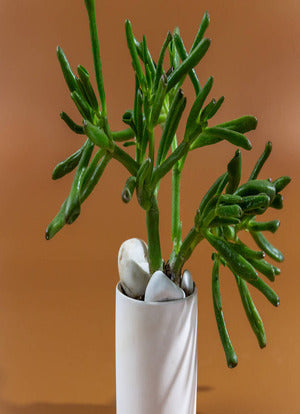
Propagating the Gollum Jade
To propagate the Gollum jade, you can use stem cuttings or leaf cuttings. Propagation can be a fun way to create new succulents and expand your collection of Gollum jade. Be patient and give the cuttings time to take root and establish themselves in their new pots.
Propagation By Stem Cuttings
- Take a stem cutting that is at least 3 inches long and has several leaves.
- Let the cutting dry out for a day or two to allow the cut end to callus over.
- Fill a small pot with well-draining soil and make a hole in the center.
- Dip the cut end of the stem cutting in rooting hormone and plant it in the hole.
- Water the soil thoroughly and place the pot in a bright location, but out of direct sunlight.
- Keep the soil moist, but not soggy, and wait for the cutting to take root.
Propagation By Leaf Cuttings
- Take a healthy leaf and cut it into sections that are at least 2 inches long.
- Let the cuttings dry out for a day or two to allow the cut ends to callus over.
- Fill a small pot with well-draining soil and make a hole in the center.
- Dip the cut end of the leaf-cutting in rooting hormone and plant it in the hole.
- Water the soil thoroughly and place the pot in a bright location, but out of direct sunlight.
- Keep the soil moist, but not soggy, and wait for the cuttings to take root.
Overwintering
To overwinter the Gollum jade, you should bring it indoors before the first frost or if the temperature drops below 50 F. Place it in a bright location, but out of direct sunlight. Water the jade plant sparingly during the winter months, allowing the soil to dry out slightly between watering's. You can also reduce the amount of fertilizer you give the succulent during this time.
Keep an eye out for pests, which can be more common in indoor environments. With proper care, your Gollum jade should survive the winter and continue to thrive in the spring.
How to Get Gollum Jade Plant to Bloom
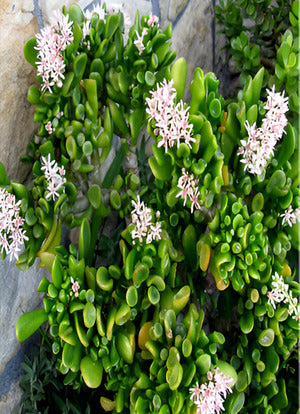
- A mature Gollum jade of at least 3 years can bloom, but it is not a common occurrence.
- When it does bloom, it produces small, star-shaped flowers that are typically white or pink in color. The flowers usually appear in the summer or fall and can last for several weeks.
- To encourage blooming, make sure your Gollum jade is getting enough light. The jade plant gollum prefers bright, indirect light, but too much direct sunlight can cause the leaves to burn.
- You can also try fertilizing your Gollum jade with a balanced fertilizer during the growing season to give it an extra boost.
Keep in mind that blooming is not a guarantee, and the Gollum jade is still a beautiful Shrek ears plant even without flowers.
Enjoy the unique shape and texture of the leaves and appreciate Crassula Gollum jade for what it is!
Gollum Jade Plant Care Schedule in Their Dormant Period
- Temperature: Gollum Jade prefers cooler temperatures during fall and winter time, ideally around 50-60°F.
- Light: It's also important to provide it with bright, indirect light to maintain its health.
- Watering: Gollum Jade enters a period of rest during dormancy, so you'll want to reduce the frequency of watering. Allow the soil to dry out between waterings, typically every two to three weeks.
- Humidity: Gollum Jade prefers lower humidity, so ensure proper air circulation to prevent excessive moisture around the plant.
Potting & Repotting of Gollum Jade
To pot or repot the Gollum jade, choose a container with good drainage holes and fill it with well-draining soil. A specialized succulent potting mix works well for this plant. When repotting, gently remove this jade plant from its current container and shake off any excess soil. Place your Gollum jade in the new container and add fresh soil around the root ball. Water it thoroughly and allow the soil to dry out slightly before watering again.
It's important not to overpot this Gollum jade succulent, as it prefers to be slightly root-bound. A good rule of thumb is to choose a container that is only slightly larger than the current one. Repotting should be done every 2-3 years, or when the succulent has outgrown its current container.

Medicinal value of Gollum Jade
The succulent crassula Gollum has medicinal benefits too. Its leaves contain compounds that have been traditionally used in herbal medicine for their healing properties. These compounds are believed to possess anti-inflammatory and antioxidant properties, making Gollum jade a potential natural remedy for certain health conditions. Extracts from tube leaf succulents are applied to wounds, warts, and other skin diseases. The extract also helps treat stomach-related issues. In Chinese traditional medicine, a jade plant is considered best for diabetes.
Additionally, some studies suggest that Gollum jade may have antimicrobial properties, further highlighting its potential therapeutic uses. Please consult with a healthcare expert before consuming this plant as the proper dosage is unknown.
Pests & Common Problems of Gollum Jade
Gollum jade is a fairly easy plant to care for, but like any succulent jade plant, it can be susceptible to pests and common problems. Here are some of the most common issues you might encounter with your gollum jade:
Overwatering: Gollum jade is a drought-tolerant plant and can go for long periods without water. Overwatering can lead to root rot and other problems, so it's important not to let the plant sit in standing water.
Pest infestation: The mealybugs, spider mites, and scale insects can infest Gollum jade plants and cause damage to the leaves and stem. These tiny insects can be treated with a solution of water and dish soap, or with an insecticidal soap.
Leaf drop: Gollum jade plants can drop leaves for a variety of reasons, including overwatering, underwatering, or exposure to extreme temperatures. If you notice your Shrek plant dropping leaves, it's important to identify the underlying cause and take steps to correct it.
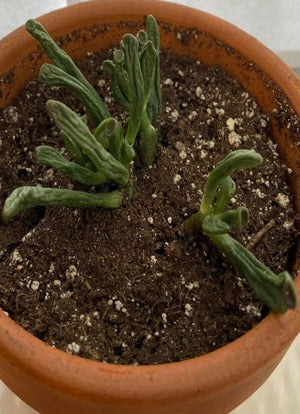
Brown spots: Brown spots on the leaves of Crassula ovata Gollum can be caused by a variety of factors, including overwatering, underwatering, or exposure to direct sunlight. If you notice brown spots on your jade plant's leaves, it's important to identify the underlying cause and take steps to correct it.
Yellowing leaves: Yellowing leaves on Gollum jade plants can be caused by overwatering, underwatering, or exposure to extreme temperatures. If you notice yellowing leaves on your plant, it's important to identify the underlying cause and take steps to correct it.
Leaf curl: Leaf curls on Gollum jade plants can be caused by a variety of factors, including overwatering, underwatering, or exposure to direct sunlight. If you notice a leaf curl on your plant's leaves, it's important to identify the underlying cause and take steps to correct it.
Overall, Gollum jade is a fairly low-maintenance plant that can provide many years of enjoyment with proper care and attention. By keeping an eye out for these common problems and taking steps to prevent them, you can help ensure that your Gollum jade stays healthy and vibrant for years to come.
Our Favorite Varieties of Jade Plants – Available at Planet Desert

1
Gollum Jade (Crassula ovata Gollum Jade)
BUY AT PLANET DESERTkeypoints:
- USDA Hardiness Zones: 9, 10, 11, 12, 13
- Blooming Period: Spring
- Mature Size: 3 ft. tall, 2 ft. wide
- Flower Color: Pink, White
The Gollum Jade is a unique and eye-catching succulent that's perfect for plant enthusiasts and collectors. This quirky plant features tubular leaves with elongated tips, resembling the famous character Gollum from "The Lord of the Rings." With its vibrant green color and interesting form, Gollum Jade adds a touch of whimsy to any indoor or outdoor space. It's a low-maintenance plant that thrives in bright, indirect light and well-draining soil. Learn more...

2
Variegated Jade Plant (Crassula ovata Variegata)
BUY AT PLANET DESERTkeypoints:
- USDA Hardiness Zones: 10, 11
- Blooming Period: Late winter - early spring
- Mature Size: 6 ft. tall, 3 ft. wide
- Flower Color: White, Pink
Crassula ovata Variegata, also known as Variegated Jade Plant or Variegated ET Fingers, is a low-maintenance, compact, and attractive succulent plant with fleshy, oval-shaped leaves in creamy white and green hues, suitable for indoor cultivation. Learn more...

3
Jade Hobbit Plant (Crassula ovata Hobbit)
BUY AT PLANET DESERTkeypoints:
- USDA Hardiness Zones: 9, 10, 11, 12
- Blooming Period: Fall - early winter
- Mature Size: 4 ft. tall, 2 ft. wide
- Flower Color: White, light pink
The Jade Hobbit plant, also known as Crassula ovata 'Hobbit,' is a unique and fascinating succulent. It gets its name from the distinctive tubular leaves that resemble the feet of a hobbit. This plant is a compact and slow-growing variety of the classic Jade plant, making it a popular choice for indoor gardens and small spaces. With its thick, fleshy leaves and a deep green color, the Jade Hobbit adds a touch of whimsy and charm to any plant collection. It's relatively low maintenance and can thrive in bright, indirect light with occasional watering. Learn more...

4
Botany Bay Jade Plant (Crassula ovata Botany Bay)
BUY AT PLANET DESERTkeypoints:
- USDA Hardiness Zones: 9,10,11
- Blooming Period: Late winter - early spring
- Mature Size: 3 ft. tall – 2 ft wide
- Flower Color: White, light pink
The Botany Bay Jade plant, also known as Crassula ovata 'Botany Bay,' is a stunning succulent that is named after the famous Botany Bay in Australia. This particular variety of Jade plant has beautiful, glossy, green leaves that are edged with a reddish hue. It is a compact and bushy plant that can grow up to 2 feet tall, making it a great choice for both indoor and outdoor gardens. Like other Jade plants, the Botany Bay Jade is relatively low maintenance and can tolerate periods of drought. Learn more...
More Types of Jade Succulents
Popular as a houseplant, the Crassula Ovata or the money plant has different varieties. The different jade plant types are:
- Crassula Arborescens is a jade succulent type known as silver dollar jade or Blue Buddha Bush.
- Crassula Arborescens Blue Bird Variegata is a jade plant species called Blue Bird Money. It is a crassula variegated jade type.
- The Hottentotta dwarf variety is a rare type of jade plant.
- The Crassula cv Gollum is a compact shrubby succulent.
- Crassula Arborescens Undulatifolia or the Ripple Jade Plant with a bonsai-like feel.
- Crassula Argentea Gollum or Lady Fingers or Gollum's fingers
- Argentea Crassula gollum variegated
- Crassula Ovata or the Lucky Jade
- Crassula Ovata Botany Bay is a recent discovery
- Crassula Ovata Harbour Lights
- Crassula Ovata Hobbit or crassula jade hobbit or the Bonsai Jade Tree
- The Royal Horticultural Society awarded crassula Ovata Hummel's or the sunset jade succulent the Garden Merit Award in 1993.
- Crassula Ovata Little Jade Tree is the small jade tree
- Crassula Ovata Mini Jade or Miniature Jade or Gollum miniature
- Crassula Ovata Pink
- Crassula portulaca Afra or the Chinese Jade Plant
- Portulacaria Afra Aurea or the Yellow Rainbow Bush
- Portulacaria Afra Cascade or Low Elephant Bush
- Jade horn tree with horn-like leaves.
- The Sunset jade plant is ideal for beginners.
Where to Buy Gollum Jade?
When it comes to buying Crassula Gollum jade, you might be able to find them at a local nursery or garden center in your area that specializes in succulents and cacti. Planet Desert is the best option if you're seeking the easiest way to get succulents online and have them conveniently shipped right to your door!
Here at Planet Desert, we have a large selection of over 500 cacti and succulents in stock and guarantee they will arrive happy and healthy. So, order a Gollum jade for sale now, or just explore all our other succulents on this site.
The Gollum jade succulent is so popular amongst nature lovers that you will find framed Sylvie succulent pictures put up in their living rooms. Search online with the words ‘jade plant near me’ to find good-quality ones.
Growers Reference Guide - Gollum Jade
| Bloom Season | Spring |
|---|---|
| Botanical Name | Crassula ovata 'Gollum' |
| Common Name | Gollum jade, money plant, ET fingers, Shrek ears |
| Dormancy | Fall, Winter |
| Family | Crassulaceae |
| Flower Color | White, pink |
| Genus | Crassula |
| Growth Habit | Compact |
| Growth Rate | Slow |
| Hardiness Zone | 9, 10, 11, 12 |
| Mature Size | 3 ft. tall, 2 ft. wide |
| Native Area | Africa |
| Plant Type | Perennial Succulent |
| Propagation | By leaf cuttings, stem cuttings |
| Resistance | Drought tolerant, heat tolerant, pest resistant |
| Soil PH | 6.5, Acidic, Neutral |
| Soil Type | Well-drained succulent potting mix soil |
| Special Features | Unique foliage, easy to grow |
| Sun Exposure | Full sun, partial shade |
| Toxicity | Mildly toxic to humans, mildly toxic to pets (Keep away from children) |
| Watering Needs | Low |
Final Thoughts
Overall, the Gollum Jade plant (Crassula ovata 'Gollum) is a fantastic choice for both plant enthusiasts and beginners alike. With its unique and captivating tubular leaves, it adds a touch of whimsy and charm to any space. The gollum plant has a slow growth rate, and can grow up to 3 feet tall and 2 feet wide, making it the talk of your yard or indoor environment. It's a relatively low-maintenance plant that can thrive in a variety of conditions, making it versatile and adaptable.
Whether you're a seasoned plant lover or just starting your plant journey, the Gollum Jade is a great addition to any collection. So go ahead and bring home this quirky and beautiful Gollum jade succulent, and enjoy the joy and beauty it brings to your surroundings!
Frequently Asked Questions
-
Is a maure jade plant poisonous?
To a certain extent, yes. Therefore, it is ideal for keeping the tube succulent away from pets and animals.
-
Is jade a succulent plant?
Yes, jade plants are succulents. They store water in their leaves, fulfilling the hydration needs of the plant. The Gollum jade succulent hates sitting in water like other succulents.
-
What are the crassula ovata’s medicinal uses?
The succulent crassula Gollum has medicinal benefits too. Extracts from tube leaf succulents are applied on wounds, warts, and other skin diseases. The extract also helps treat stomach-related issues. In Chinese traditional medicine, a jade plant is considered best for diabetes.
-
What is the history of the jade plant?
The crassula argentea or the Gollum cactus plant has its origin in South Africa but has been mostly nursery-produced or cultivated as a hybrid houseplant in European countries and the US. Since it is tough and can survive challenging conditions, the jade plant crassula argentea has been reared in other parts of the world for over a century now.
-
What are the names of the rare jade plants?
There are about 14,00 types of crassula ovata succulents. Some of the varieties are pretty rare. The Ripple Jade, for example, is a Gollum jade bonsai and one of the rare ones. Similarly, the Hoteentotta is an unusual plant. It is plump and dwarfish with fuzzy leaves.
-
What is the name of the succulent that looks like a jade plant?
Portulaacaria afra is an African succulent species that looks like the original jade but is a dwarf in every way. Therefore, it is known as dwarf jade or baby jade.
-
What does a baby jade plant look like?
The baby jade plant has tiny leaves that are a replica of the original jade. The growth of the baby jade plant is compact.
-
Tell us about the jade plant vs. Jade tree?
The Crassula Gollum jade plant looks like a miniature crassula jade tree. The stems, for example, are woody and thick, giving it the appearance of a tree.
-
What is the reason for gollum's jade wrinkled?
Crassula ovata Gollum is a hobbit succulent that thrives underwater, fighting drought stress. It requires bright light to highlight its reddish leaves. Watering is minimal, only when the topsoil is dry. The plant needs fast-draining soil, such as garden soil with perlite or pumice and sand. The hardiness zone for this plant is 9 to 11. Gollum succulent propagation is best done through stem and leaf cuttings or crassula umbrella seeds.
-
How to transplant jade cuttings?
Take a stem or leaf cutting. Let it dry. Once dried, place it into a well-drained soil mix containing perlite (50%) and soil (50%). Water it sparingly for the soil mix to get damp. This is how you can transplant jade plant cuttings.
-
How much light does a jade plant need indoors?
Place the jade plant near the entrance. Keep it towards the southeast direction. One essential aspect of crassula ovata Gollum care indoors is receiving sunlight for at least six hours. Make sure that the place your plant is kept receives direct sunlight if it is a mature jade and indirect sunlight when jade plants are small.

























